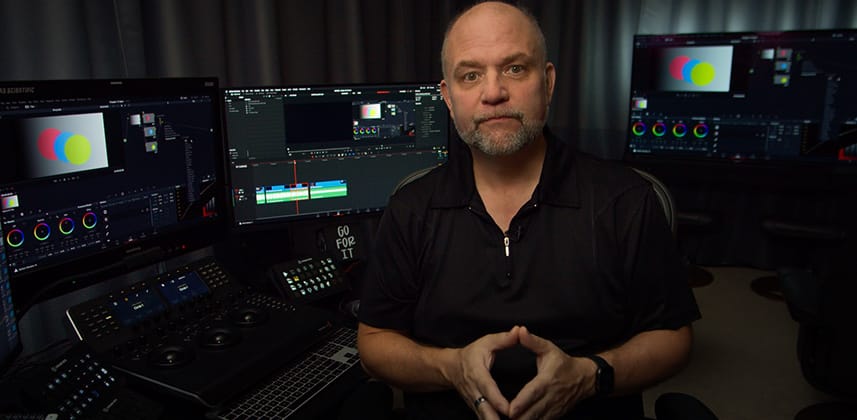| Series |
|---|
NOTE: This Insight is part of our Color Page Toolkit Series. This series combines lessons from our legacy paid training courses and Insights, helping DaVinci Resolve newcomers get comfortable in Resolve’s Color Page… and then progress onto the more advanced topics that are the hallmark of Mixing Light.
Nodes 101 Part 2: Understanding the Layer Mixer and Parallel Mixer Nodes
In Part 2, we begin where we left off on Serial Nodes in Part 1– showing you how to rebuild the macro at the end of that Insight. Then, it’s on to Layer Mixer and Parallel nodes. If you want to master Resolve’s node graph then learning about these two nodes is essential. Unlike Serial Nodes, both the Layer Mixer and Parallel Mixer allow for multiple inputs. Both types of nodes process and combine their inputs into a single output but with very different results.
Using these nodes (usually) gives results that are different than simply stringing together serial nodes, one after another. Sometimes, the differences in these operations is non-existent. Other times, the differences are profound. In this Insight, you’ll learn about both types of nodes and how to use them and when you can expect them to work identically.
Layer Mixer node: Compositing in the Node Tree
It’s not unusual for colorists to need to composite multiple layers in the node tree on the Color Page. That’s what the Layer Mixer node allows: Combine multiple Serial Nodes – each performing different operations – and allow the colorist to set the priority of those layers (deciding which layer is on top, which is on the bottom, and the ordering in between).
Parallel Node: Combining Serial Nodes – But In Parallel
The Parallel Mixer node is similar to the Layer Mixer node – but there is no priority. And if the operations inside the Serial Nodes overlap with other nodes feeding the Parallel Mixer then those operations start to interact with each other.
Table of Contents
Are you looking for a specific bit of info and don’t want to watch this entire Insight? The ToC below will let you jump into key points of this Nodes 101 Insight. Enjoy!
- 00:10 – Introduction and Observations
- 00:40 – How to manually build an ‘Outside Node’ by connecting alpha channels
- 02:00 – Inverting an alpha channel using the Key Palette
- 03:50 – What is the Layer Mixer node?
- 06:09 – How do you manually add a Layer Mixer node and connect a second Serial Node?
- 06:44 – Can you color grade the actual Layer Mixer node?
- 07:03 – Adding additional inputs and Serial Nodes to the Layer Mixer node
- 07:44 – Order of operations in a Layer Mixer
- 11:05 – Using ‘composite modes’ by changing the default operations of the Layer Mixer
- 12:37 – Using composite modes to color grade images
- 14:14 – How to learn to anticipate the result of the different composite modes
- 15:52 – Introduction to Parallel Mixer nodes
- 19:27 – How is the Layer Mixer node different from putting the same operations in a linear node sequence?
- 23:19 – How the same operation provides very different results with a Parallel Mixer
- 24:38 – Morphing between Parallel and Layer Mixers
- 25:15 – Demonstrating how overlapping operations create differing results
- 27:26 – Conclusion
Related Insights
- Parallel Mixer Node Part 2 – This Insight follows up with several demonstrations of how you can use the Parallel Mixer node
- Parallel Mixer Node Part 1 – I mention in this Insight about downloadable assets for Premium members. Click through to this Insight for those assets.
- Using the Layer Mixer Node to ‘Switch’ Between Looks – If you need to switch between different Looks in a single shot, learn how to use DaVinci Resolve’s ‘Layer Mixer’ node for fine-tuned control.
Comments, Questions, or Observations?
Use the Comments section below this video Insight to share your thoughts on this topic.
-pat
Member Content
Sorry... the rest of this content is for members only. You'll need to login or Join Now to continue (we hope you do!).
Need more information about our memberships? Click to learn more.
Membership optionsMember Login


